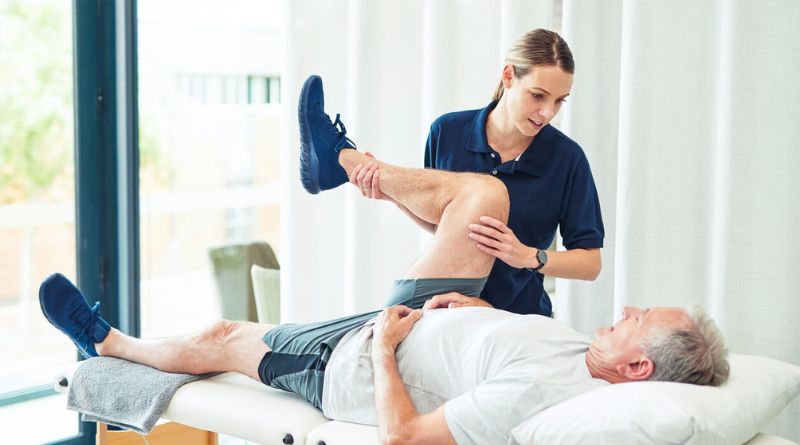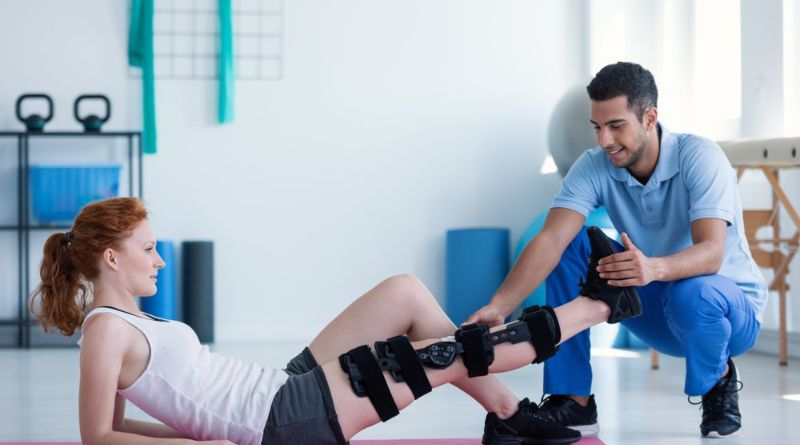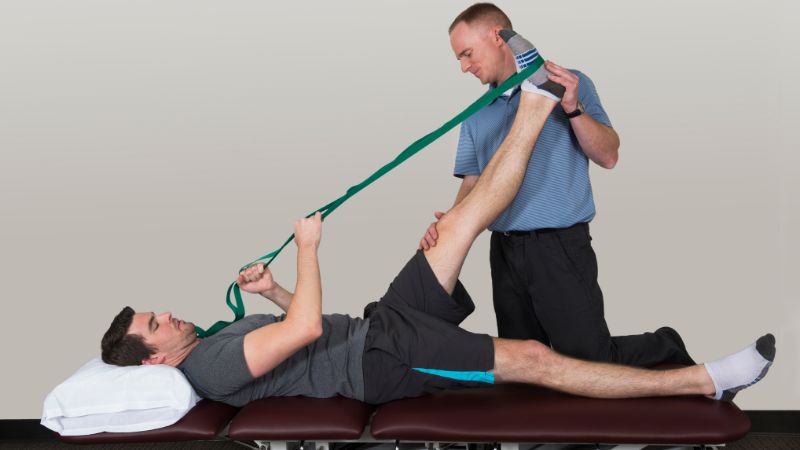Surgery marks a significant milestone in the journey towards health and healing, yet the path to recovery extends far beyond the operating room. Post-surgery rehabilitation, particularly through physical therapy, plays a pivotal role in restoring optimal function and mobility. This specialized form of therapy offers a multitude of benefits that are essential for recovering patients. From managing pain and restoring range of motion to strengthening muscles and preventing complications, physical therapy addresses various aspects crucial for recovery. It facilitates the gradual return to normal activities, enhances psychological well-being, and empowers individuals to regain independence. Understanding the profound benefits of physical therapy for post-surgery rehabilitation underscores its importance in achieving a successful recovery and improving overall quality of life.
Benefits of Physical Therapy for Post-Surgery Rehabilitation
Pain Management

Pain management is a critical aspect of post-surgery rehabilitation addressed effectively through physical therapy. Following surgery, patients often experience pain due to tissue trauma, inflammation, and changes in movement patterns. Physical therapists utilize a variety of techniques to alleviate pain, including manual therapy, therapeutic exercises, and modalities such as heat, cold, ultrasound, or electrical stimulation. These interventions help reduce pain sensitivity, improve blood flow to the affected area, and promote tissue healing. By addressing pain early in the rehabilitation process, physical therapy enables patients to participate more actively in their recovery exercises, leading to quicker improvements in mobility and function. Moreover, effective pain management enhances patient comfort and compliance with rehabilitation programs, which are crucial for achieving optimal recovery outcomes.
Restoring Range of Motion
Post-surgery, joints and muscles can become stiff due to immobility, surgical trauma, or scar tissue formation. Physical therapists design personalized stretching and range of motion exercises tailored to each patient’s specific needs. These exercises aim to gradually increase flexibility, reduce stiffness, and prevent the formation of adhesions or contractures. Through gentle and progressive movements, therapists help patients regain full range of motion essential for daily activities and functional independence. Restoring range of motion not only enhances flexibility but also improves joint lubrication and reduces the risk of future musculoskeletal complications. Physical therapy interventions are crucial in optimizing the healing process, promoting tissue elasticity, and ensuring long-term joint health following surgery.
Strengthening Muscles
Muscle weakness commonly occurs following periods of immobility or reduced activity post-surgery. Physical therapy focuses on strengthening muscles surrounding the surgical site and throughout the body to enhance stability, endurance, and overall function. Therapists prescribe targeted exercises that gradually increase in intensity and complexity, promoting muscle hypertrophy, neuromuscular re-education, and improved muscular coordination. By addressing muscle weakness early in the rehabilitation process, physical therapy helps restore optimal muscle function, support joint stability, and prevent compensatory movements. Strengthening exercises are tailored to each patient’s capabilities and progress, ensuring safe and effective recovery while reducing the risk of re-injury and enhancing overall physical performance.
Preventing Complications
Post-surgery complications such as blood clots, joint stiffness, and muscle atrophy can significantly impact recovery outcomes if not addressed promptly. Physical therapists play a crucial role in identifying early signs of complications and implementing preventive measures through specialized interventions. These may include gentle mobilization techniques, compression therapy, and therapeutic exercises aimed at improving circulation, joint mobility, and muscle strength. By promoting early mobilization and active participation in rehabilitation, physical therapy reduces the risk of complications, accelerates healing, and improves overall recovery outcomes. Through comprehensive assessment and personalized treatment plans, therapists ensure that patients receive optimal care to minimize the impact of surgery-related complications and facilitate a smooth recovery process.
Improving Balance and Coordination

Surgery, particularly on the lower extremities or spine, can disrupt a patient’s balance and coordination. Physical therapists incorporate balance exercises, proprioceptive training, and vestibular rehabilitation techniques to restore these essential functions. These interventions help improve sensory feedback, spatial awareness, and postural control, thereby reducing the risk of falls and enhancing mobility during daily activities. By addressing balance deficits early in the rehabilitation process, therapists help patients regain confidence in their movement abilities and facilitate a safe return to functional activities. Improved balance and coordination not only support physical recovery but also contribute to overall independence and quality of life following surgery.
Enhancing Overall Mobility
Regaining mobility is a primary goal of post-surgery rehabilitation facilitated through physical therapy interventions. Therapists utilize a combination of therapeutic exercises, gait training, and assistive devices to help patients regain the ability to walk and perform daily tasks independently. These interventions are tailored to each patient’s specific needs and progress, promoting gradual improvements in mobility, endurance, and functional capacity. By focusing on restoring optimal movement patterns and addressing mobility impairments, physical therapy enhances overall independence and facilitates a smooth transition back to daily routines and activities. Therapists work closely with patients to set realistic goals and milestones, ensuring a personalized approach to recovery that maximizes outcomes and improves quality of life.
Educating Patients
Education is a fundamental component of post-surgery rehabilitation provided by physical therapists. Therapists educate patients about their surgical procedure, recovery timeline, and expectations for rehabilitation. They also provide guidance on proper body mechanics, ergonomic principles, and home exercise programs tailored to support ongoing recovery. By empowering patients with knowledge and understanding of their condition, therapists promote active participation in rehabilitation and self-management strategies. Education helps patients make informed decisions about their health, adopt healthy lifestyle habits, and minimize the risk of complications during recovery. Through ongoing communication and support, physical therapists empower patients to take control of their recovery journey and optimize long-term outcomes following surgery.
Promoting Psychological Well-being
Recovering from surgery can be emotionally challenging, impacting a patient’s psychological well-being and overall quality of life. Physical therapy addresses these concerns by providing emotional support, encouragement, and motivation throughout the rehabilitation process. Therapists foster a supportive environment where patients feel empowered to overcome challenges, set achievable goals, and celebrate progress. By promoting positive coping strategies and resilience, physical therapy enhances psychological well-being and reduces stress associated with recovery. Therapists also collaborate with patients to address concerns, fears, and emotional barriers that may impact recovery, ensuring holistic care that considers both physical and emotional aspects of healing.
Facilitating Return to Normal Activities

The ultimate goal of post-surgery rehabilitation is to help patients return to their normal activities, work, sports, and hobbies. Physical therapists collaborate closely with patients to set realistic goals and develop individualized treatment plans based on their progress and functional abilities. Therapists gradually reintroduce activities, monitor recovery milestones, and adjust treatment strategies as needed to ensure a safe and successful return to daily routines. By facilitating a gradual transition and providing ongoing support, physical therapy enables patients to regain independence, confidence, and quality of life following surgery. Therapists empower patients to achieve optimal functional outcomes and maintain long-term physical health through comprehensive rehabilitation and personalized care.
For More Related Posts Keep Visiting: 9 Best Benefits of physical therapy for women’s health issues
Conclusion
In conclusion, the benefits of physical therapy for post-surgery rehabilitation are multifaceted and essential for achieving optimal recovery outcomes. From managing pain and restoring range of motion to enhancing mobility and preventing complications, physical therapists play a crucial role in supporting patients through every stage of their recovery journey. By tailoring treatment plans to individual needs, therapists facilitate gradual improvements in strength, flexibility, and overall function. Moreover, physical therapy promotes psychological well-being by providing emotional support and empowering patients to regain independence and confidence. As patients progress through rehabilitation, they gain valuable knowledge about their condition and learn techniques to maintain long-term health and mobility.
FAQs
How soon after surgery can physical therapy begin?
Physical therapy typically begins shortly after surgery, once the surgeon clears the patient for movement and rehabilitation. The timing may vary based on the type of surgery and individual circumstances.
How long does post-surgery physical therapy last?
The duration of post-surgery physical therapy varies depending on the type of surgery, patient’s condition, and recovery progress. It may take several weeks or months at a time.
What should I expect during a physical therapy session after surgery?
Physical therapy sessions after surgery involve a combination of exercises, manual therapy, and possibly modalities like heat or ultrasound. The therapist will guide you through movements to improve strength, flexibility, and overall function, tailored to your specific needs and progress.





